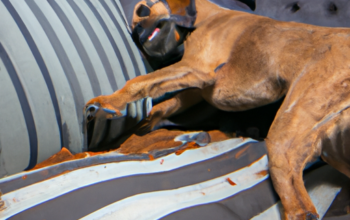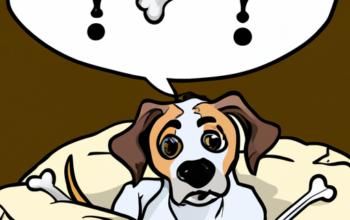So, you’ve just brought home a new furry friend and now you’re faced with the challenge of toilet training. You might be wondering ‘how many puppy pads should I put down?’
Well, it’s not as simple as just laying out a few on the floor. There are several factors to consider such as your pet’s breed, size, and age that can largely influence their training process. This article will guide you through understanding your pet’s needs, offering tips for effective training based on various influencing factors like their eating habits or health conditions.
Remember, patience is key in this learning journey for both you and your puppy. By approaching this task diligently and with love, you’ll ensure an easier transition for your pup into its new home while also creating a cleaner environment for everyone involved.
Let’s get started!
Understanding Your Pet’s Needs
It’s crucial to understand your pet’s needs when determining the number of puppy pads to lay down, as it can vary based on their age, size, and bladder control capabilities.
Young puppies with smaller bladders will require more frequent changes than adult dogs. Large breeds may need multiple pads due to their size. Also, consider your dog’s health; certain medical conditions can cause increased urination requiring additional pads.
While training, it’s advisable to have an extra pad available in case of accidents. It teaches your pup there’s always a suitable spot for relief. Remember that consistency is vital in housebreaking your puppy – make sure they know where their designated bathroom spot is.
Ultimately, understanding your dog’s needs is paramount for efficient and effective potty-training practices.
Importance of Size and Breed in Training
Understanding your pet’s breed and size can significantly impact the success of their house training, as these factors influence their bladder capacity and frequency of bathroom breaks. Larger breeds often have larger bladders, hence they need fewer puppy pads than smaller ones. Conversely, smaller breeds like Chihuahuas or Pugs may require more frequent changes due to their smaller bladder sizes.
To summarize, consider this table:
| Breed Size | Approximate Bladder Capacity | Recommended Number of Puppy Pads |
|---|---|---|
| Small | 1-2 hours | 3-4 |
| Medium | 2-3 hours | 2-3 |
| Large | 4+ hours | 1-2 |
Knowing your dog’s breed and size will better equip you to serve them in house training. It promotes a healthy environment for both of you while also saving on unnecessary waste.
Age Factor in Toilet Training
Time certainly flies, but with every tick of the clock, your little furball’s toilet training needs are rapidly changing. The age of your puppy significantly impacts how many pads you should put down.
Here are some key points to consider:
-
Puppies under 10 weeks may struggle to control bladder function and need more frequent changes.
-
Between 10 weeks and 6 months, puppies start gaining better control, gradually reducing the number of pads needed.
-
Older pups above 6 months typically require fewer pads as they can hold their bladder longer.
-
Aging dogs suffering from incontinence might need more pads for comfort and hygiene.
-
Always keep a spare pad handy for unexpected accidents.
Remember, patience is essential during this period of growth.
Other Influencing Factors
Aside from your dog’s age, there are other crucial elements to consider when it comes to toilet training.
For instance, the breed of your pup can influence how many pads you should use. Some breeds are naturally more active and may need more space covered by pads.
Additionally, the size of your living space plays a vital role. If you have a large house with multiple rooms, you might need to place extra puppy pads in different areas until your pet gets comfortable with one spot.
Your work schedule also affects this process; if you spend long hours away from home, having several pads down could be beneficial.
Furthermore, remember that consistency is key in training; changing pad locations often can confuse your pup and hinder their learning progress.
Tips for Effective Training
Believe me, you’ll be on cloud nine when your furry friend finally gets the hang of toilet training – it’s like winning the lottery!
Let’s dive into some game-changing tips to make this happen quicker. Firstly, consistency is key. Maintain a routine for feeding and potty breaks; this helps your pup understand when it’s time to go.
Secondly, patience is crucial. Accidents will happen, so don’t scold harshly; instead reinforce positive behavior with treats or praise.
Finally, gradually transition from multiple pads to one as they get better at aiming. Remember, every dog learns at their own pace and what works for one might not work for another. Tailor your approach based on your dog’s breed and personality traits while ensuring their comfort and well-being throughout the process.
Frequently Asked Questions
What are the best brands of puppy pads available in the market?
Some of the best brands for puppy pads include Frisco, American Kennel Club, Four Paws Wee-Wee, and Simple Solution. They’re highly absorbent, leak-proof and come in various sizes to suit your pup’s needs.
How can I dispose of used puppy pads in an environmentally friendly way?
You can dispose of used puppy pads in an eco-friendly way by using biodegradable bags. Simply place the used pad in the bag, tie it securely and put it in your household waste bin.
Can puppy pads be used for other pets like cats or rabbits?
Absolutely, just as a lighthouse guides ships at sea, puppy pads can guide your other pets too. Cats and rabbits can certainly use them. They’re practical for litter training or managing incontinence issues in older animals.
What are some common mistakes to avoid when using puppy pads for the first time?
Don’t overwhelm your pup with too many pads at once. Avoid moving the pad around as this can confuse them. Remember, not rewarding successes and punishing accidents are common mistakes to steer clear of.
Are there alternatives to puppy pads for house training my pet?
Yes, there are alternatives to puppy pads for house training your pet. Crate training and constant supervision can be effective. You could also use outdoor potty breaks or bell training for signaling the need to go outside.
Conclusion
So, you’ve got the scoop on puppy pads. Your pet’s size, breed, and age all play a part in how many you should lay down. Other factors like diet and activity level also influence this.
Remember to train effectively – consistency is key! It’s no coincidence that understanding your pup’s needs leads to more successful potty training. Keep up the good work; your dedication will surely pay off!



